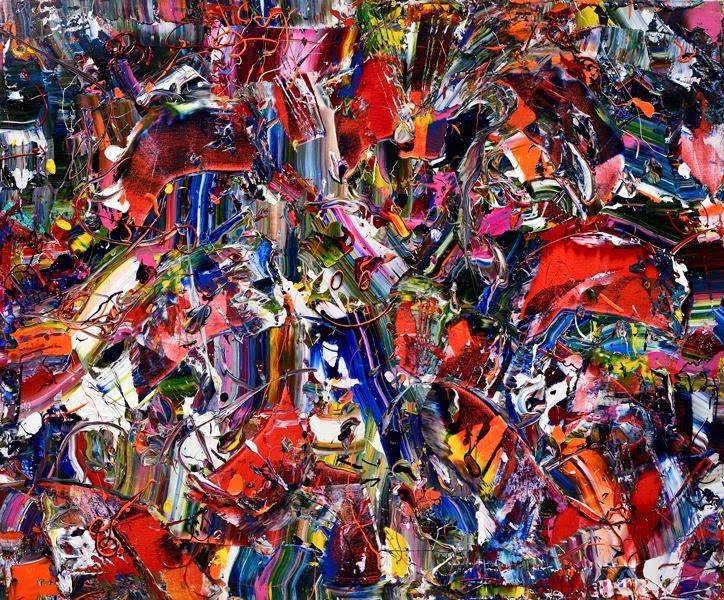There is nothing quite like seeing a
child’s reaction to works of art. I experienced this firsthand when I conducted
a tour for two 4 year olds and their mothers at Sotheby’s back in November. We
previewed an exhibition of African, Oceanic, and Indonesian art from the collection
of a legendary
contemporary art dealer, Allan Stone.
According to the sale catalog, we learned that Stone acquired his first African artwork in 1955, and over the next 50 years built one of the most important private collections in the world of arts from primary cultures. Many of the works for sale had been featured extensively in museum exhibitions and important publications. To see the collection in its entirety and under one roof was certainly a rare and exciting opportunity.
To put the art we were about to see in context, I showed the group several maps. We started with a map of Africa, moved onto a map of the Oceanic Islands in the Pacific Ocean, Australia, some parts of Hawaii, and finished with a map of the archipelago of Indonesia. We referenced these maps as we moved throughout the exhibition to remind ourselves where the artwork we were looking at came from originally.
We discussed several objects, all with different functions and constructed of various materials: a necklace from the Fiji Islands made of whale teeth, an Asante hair comb from Ghana, A Yoruba – Ijebu bronze armlet and Ibibio monkey mask from Nigeria, and a Bamileke beaded elephant mask from Cameroon. We made interesting observations about the objects’ textures, colors, and materials and speculated who we thought wore the pieces, if they were comfortable, what animals were portrayed, and brainstormed about how old we thought they were. We had quite a lively conversation.
Art history is a language of comparison, and Sotheby’s allowed us to do just that. After we left the objects and jewelry of Africa, we were able to see extremely different pieces of sculpture and jewelry in a Contemporary art preview just a few floors away. I was able to show the children works of art by Alexander Calder (1898-1976) a highly revered and recognizable American painter and sculptor. Calder is perhaps best known for his mobiles, which I explained are moving sculptures made of wire and most always fabricated out of the primary colors, red, blue, yellow (along with black and white). The children had just studied primary colors in art class, and loved being able to talk about the color wheel. In addition to his sculpture, I explained that Calder was also a prolific jewelry designer. We saw an extraordinary necklace, bracelet and comb, all made of silver. While the materials and time period were clearly different from what we saw earlier, the children definitely recognized the similarities they could draw between the pieces, in terms of their size, how they were designed, and their function.
Who ever thought that decorative arts from Africa and the modernist jewelry of Calder could ever be grouped together – but as we saw, it was not only possible but made perfect sense in this context.
According to the sale catalog, we learned that Stone acquired his first African artwork in 1955, and over the next 50 years built one of the most important private collections in the world of arts from primary cultures. Many of the works for sale had been featured extensively in museum exhibitions and important publications. To see the collection in its entirety and under one roof was certainly a rare and exciting opportunity.
To put the art we were about to see in context, I showed the group several maps. We started with a map of Africa, moved onto a map of the Oceanic Islands in the Pacific Ocean, Australia, some parts of Hawaii, and finished with a map of the archipelago of Indonesia. We referenced these maps as we moved throughout the exhibition to remind ourselves where the artwork we were looking at came from originally.
We discussed several objects, all with different functions and constructed of various materials: a necklace from the Fiji Islands made of whale teeth, an Asante hair comb from Ghana, A Yoruba – Ijebu bronze armlet and Ibibio monkey mask from Nigeria, and a Bamileke beaded elephant mask from Cameroon. We made interesting observations about the objects’ textures, colors, and materials and speculated who we thought wore the pieces, if they were comfortable, what animals were portrayed, and brainstormed about how old we thought they were. We had quite a lively conversation.
Art history is a language of comparison, and Sotheby’s allowed us to do just that. After we left the objects and jewelry of Africa, we were able to see extremely different pieces of sculpture and jewelry in a Contemporary art preview just a few floors away. I was able to show the children works of art by Alexander Calder (1898-1976) a highly revered and recognizable American painter and sculptor. Calder is perhaps best known for his mobiles, which I explained are moving sculptures made of wire and most always fabricated out of the primary colors, red, blue, yellow (along with black and white). The children had just studied primary colors in art class, and loved being able to talk about the color wheel. In addition to his sculpture, I explained that Calder was also a prolific jewelry designer. We saw an extraordinary necklace, bracelet and comb, all made of silver. While the materials and time period were clearly different from what we saw earlier, the children definitely recognized the similarities they could draw between the pieces, in terms of their size, how they were designed, and their function.
Who ever thought that decorative arts from Africa and the modernist jewelry of Calder could ever be grouped together – but as we saw, it was not only possible but made perfect sense in this context.
























